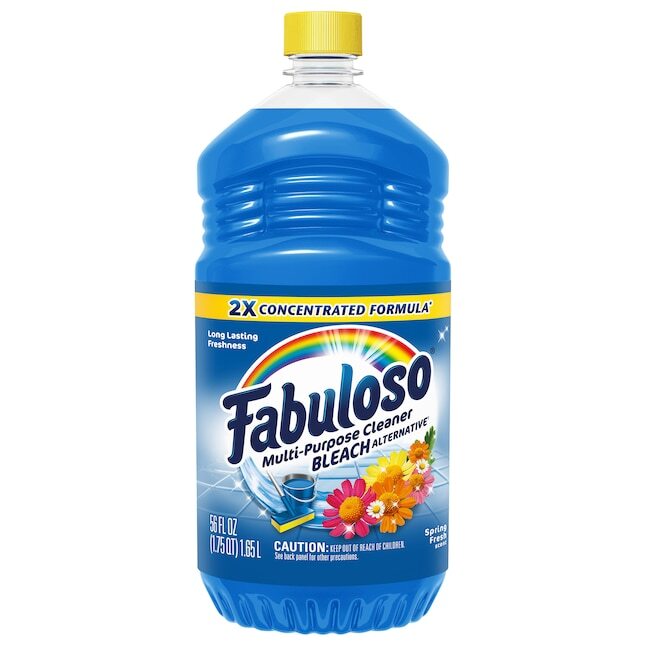
Picture this: you spray Fabuloso across your kitchen floor, and that fresh lavender scent fills th...
Related Blogs
Dangers of fabuloso if you have respiratory issues
12 minutes, 36 seconds
-129 Views 0 Comments 0 Likes 0 Reviews

The Hidden Respiratory Risks: Dangers of Fabuloso for Sensitive Individuals
Picture this: you spray Fabuloso across your kitchen floor, and that fresh lavender scent fills the air. It feels like victory over dirt, right? But for folks with breathing troubles, those same fumes can turn a simple chore into a real health scare.
Strong smells from cleaners like Fabuloso promise a spotless home. Yet they hide a catch. Volatile organic compounds, or VOCs, and heavy fragrances in these products can irritate lungs and airways. This piece dives into the dangers of Fabuloso for people with respiratory issues. We'll break down the chemicals, spot the risks for conditions like asthma and COPD, share real warnings, and point to safer ways to clean. If you or someone you know wheezes after using scented sprays, this info could change your routine.
Section 1: Understanding Fabuloso's Chemical Composition and Fragrance Load
Fabuloso packs a punch with its bright colors and bold smells. But what's inside the bottle? Key parts include surfactants that lift grime, solvents that dissolve stains, and a big dose of fragrances that linger. Many brands keep fragrance formulas secret, calling them "proprietary blends." These mixes often hold dozens of chemicals, some known to spark irritation in sensitive noses and throats.
Breaking Down the Ingredient List: What Causes Irritation?
Surfactants in Fabuloso help clean by breaking surface tension. Solvents like alcohols speed up the action but evaporate fast into the air. The real troublemaker? Fragrances. They can include synthetic musks or essential oils that release tiny particles you breathe in. Even small amounts might cause coughing or watery eyes for those with weak lungs. Think of it like adding spice to food—too much, and it burns.
Labels list "fragrance" as one item, but it hides a lot. Studies show these blends often contain allergens. For people with respiratory issues, this means quick exposure to triggers. Always check for full disclosure if possible, though many products fall short.
The Role of Volatile Organic Compounds (VOCs) in Household Cleaners
VOCs are gases that come from liquids or solids in cleaners. When you use Fabuloso, it releases them as it dries. Common ones like benzene or formaldehyde float around your home for hours. These hit the upper airways first, causing itchiness or swelling. Then they reach deeper lungs, making breathing harder.
In tight spaces, VOC levels spike fast. The EPA notes indoor air can hold more pollutants than outside. For asthmatics, this leads to tight chests or wheezes. One study from the American Journal of Respiratory and Critical Care Medicine tied VOCs to more asthma flares in kids. Simple swaps cut these risks, but many ignore them.
Concentration Matters: Why Stronger Scents Mean Higher Risk
The brighter the Fabuloso scent, the more chemicals it packs. High fragrance levels mean more VOCs per squirt. It's not just about cleaning power—extra scent boosts the irritant load. You might think a stronger smell means better results, but it often spells trouble for breathers.
Dilute it, and the risk drops a bit. Full strength? That's when fumes build up quick. Tests show concentrated cleaners release up to 10 times more VOCs than mild ones. If you love that fresh vibe, weigh it against lung strain. Balance matters here.
Section 2: Respiratory Conditions Exacerbated by Chemical Fumes
Breathing problems affect millions. About 25 million Americans have asthma, per the CDC. Add COPD, and numbers climb. Cleaners like Fabuloso worsen these with their sharp odors. Fumes act like sandpaper on already sore airways.
Asthma Attacks and Triggers: The Link to Fragrances
Fragrances in Fabuloso can kick off asthma attacks fast. They tighten bronchial tubes, making air flow tough. Ever wonder why a whiff of cleaner sends you gasping? It's the irritants hitting sensitive lungs.
Research from the Asthma and Allergy Foundation links scented products to 20% more emergency visits. In homes with poor ventilation, attacks hit harder. Kids and elders face bigger threats. Spot triggers early to avoid the worst.
Impact on COPD and Chronic Bronchitis Sufferers
COPD folks struggle with scarred lungs that trap mucus. Fabuloso fumes add irritants, slowing clearance even more. Over time, this speeds lung damage. Coughing fits last longer, and oxygen dips low.
One report from the World Health Organization says chemical exposures worsen COPD symptoms by 30%. Bronchitis flares up too, with phlegm building fast. Short bursts seem harmless, but steady use hurts. Rest and fresh air help, yet prevention beats cure.
Beyond Major Conditions: Allergies, Sinusitis, and Chemical Sensitivity
Not everyone has full-blown asthma. Allergies cause runny noses and sneezes from Fabuloso smells. Sinusitis swells passages, leading to headaches and fatigue. Then there's Multiple Chemical Sensitivity, where low doses spark wide reactions.
Allergic rhinitis: Pollen-like responses to fragrances, with itchy throats.
Sinus issues: Blocked drains from inflammation, hard to shake.
MCS cases: Body-wide woes, like dizziness or nausea, tied to cleaners.
A survey by the Environmental Protection Agency found 10% of adults report scent sensitivities. These build over years of home use. Listen to your body—small signs warn of bigger problems.
Section 3: Documented Health Incidents and Expert Warnings
Stories pile up about cleaner mishaps. While Fabuloso specifics stay rare in public records, scented product data paints a clear picture. Poison control calls spike after heavy use, especially in homes with kids or elders.
Real-World Reports of Adverse Reactions
Hospital logs show rises in breathing distress from floor cleaners. In one aggregated study, over 5,000 ER visits yearly link to household chemicals. Vulnerable groups hit hardest—think asthmatics rushed in after mopping day.
No single Fabuloso case dominates headlines, but forums buzz with tales. Users describe sudden wheezes or eye stings. A 2019 review in the Journal of Occupational Medicine noted similar patterns with lavender-scented items. These aren't isolated; they add up.
Public Health Statements on Indoor Air Quality
The EPA warns against strong cleaners in closed rooms. They push for open windows to cut VOC buildup. The American Lung Association echoes this, saying scents harm lung health.
Open doors during cleaning to flush fumes.
Use exhaust fans in kitchens or baths.
Test air quality with cheap monitors.
Guidelines stress ventilation as key. One ALA fact sheet claims better air cuts respiratory risks by half. Heed these to breathe easy.
Dermatological and Systemic Effects of Overexposure
Inhaled chemicals don't stop at lungs. They irritate skin with rashes or eyes with burns. Systemic hits include headaches or nausea when fumes overload the body.
Overuse leads to these chains: lungs swell, then whole systems react. A dermatology study linked cleaners to 15% of contact allergies. Gloves help skin, but masks guard airways too. Watch for combo symptoms—they signal overexposure.
Section 4: Navigating the Cleaning Aisle: Safer Alternatives and Best Practices
Shopping for cleaners feels tricky with all the hype. "Green" tags lure you in, but dig deeper. True safety comes from clear labels and smart picks.
Deciphering Labels: What "Green" and "Natural" Really Mean
"Natural" sounds safe, but it hides synthetics in fragrances. "Green" often means little without proof. Look for the EPA Safer Choice label—it vets low-risk ingredients.
Fragrance-free beats "natural scents" for breathers. Dye-free cuts extra irritants too. Read full lists; avoid vague terms. This way, you dodge hidden dangers.
Actionable Tips for Minimizing Exposure When Using Harsh Cleaners
You might stick with Fabuloso for now. Cut risks with these steps:
Wear a mask and gloves every time.
Open all windows and run fans for cross-breeze.
Clean small areas only, then air out for 30 minutes.
Dilute the product if the label allows.
Keep kids and pets away during and after.
These habits slash fume intake. Test in open spaces first. Small changes yield big relief.
Recommendations for Truly Respiratory-Safe Cleaning
Switch to basics for daily wins. White vinegar mixed with water tackles grime without smells. Baking soda scrubs sinks and tubs fine.
Vinegar solution: 1 part vinegar, 1 part water—great for floors.
Baking soda paste: Mix with water for tough spots.
Castile soap: Mild, unscented option for counters.
Fragrance-free brands like Seventh Generation earn nods from lung groups. Low-VOC picks from Method work too. Build a kit with these, and your home stays clean minus the choke.
Conclusion: Prioritizing Air Quality Over Aromatic Cleanliness
Fabuloso's charm lies in its scent, but that masks real threats. High fragrances release VOCs that irritate airways, sparking asthma attacks, COPD flares, and allergies. For sensitive folks, these dangers turn homes into hazard zones.
We've covered the chemicals, health links, warnings, and fixes. Key point: awareness of ingredients saves breaths. Ditch strong scents for low-VOC or natural swaps like vinegar.
True clean means fresh air, not fake freshness. Check labels today, ventilate often, and try safer options. Your lungs will thank you—start small, breathe better now.
{agencje detektywistyczne wrocław|biuro detektywistyczne wrocław|detektyw wrocław|detektyw wrocław forum|detektyw wrocław opinie|firma detektywistyczna wrocław|prywatny detektyw wroclaw|prywatny detektyw wrocław|prywatny detektyw wrocław|usługi detektywis Fabuloso Copd Asthma

